How to use an ice axe: wield your ice tool with confidence
We guide you through how to use an ice axe for winter walking, mountaineering and ice climbing, as well as how to use one to stop a fall

For hikers, knowing how to use an ice axe correctly opens up a whole new wintery world of snow-capped peaks, stunning white ridgelines and wondrous sights. For many, the mountains are at their best when plastered in snow. It’s their wildest, most elemental state and being among them during this time is a truly rewarding experience.
However, with increased rewards comes increased danger, which is where the additional equipment associated with winter mountaineering comes into play. To take your hiking into winter conditions, you’ll need to invest in the holy trinity of winter equipment: winter boots, crampons and an ice axe. An axe allows you to balance, dig, cut, support and probe in this challenging environment, as well as providing a hand hold in tricky situations.
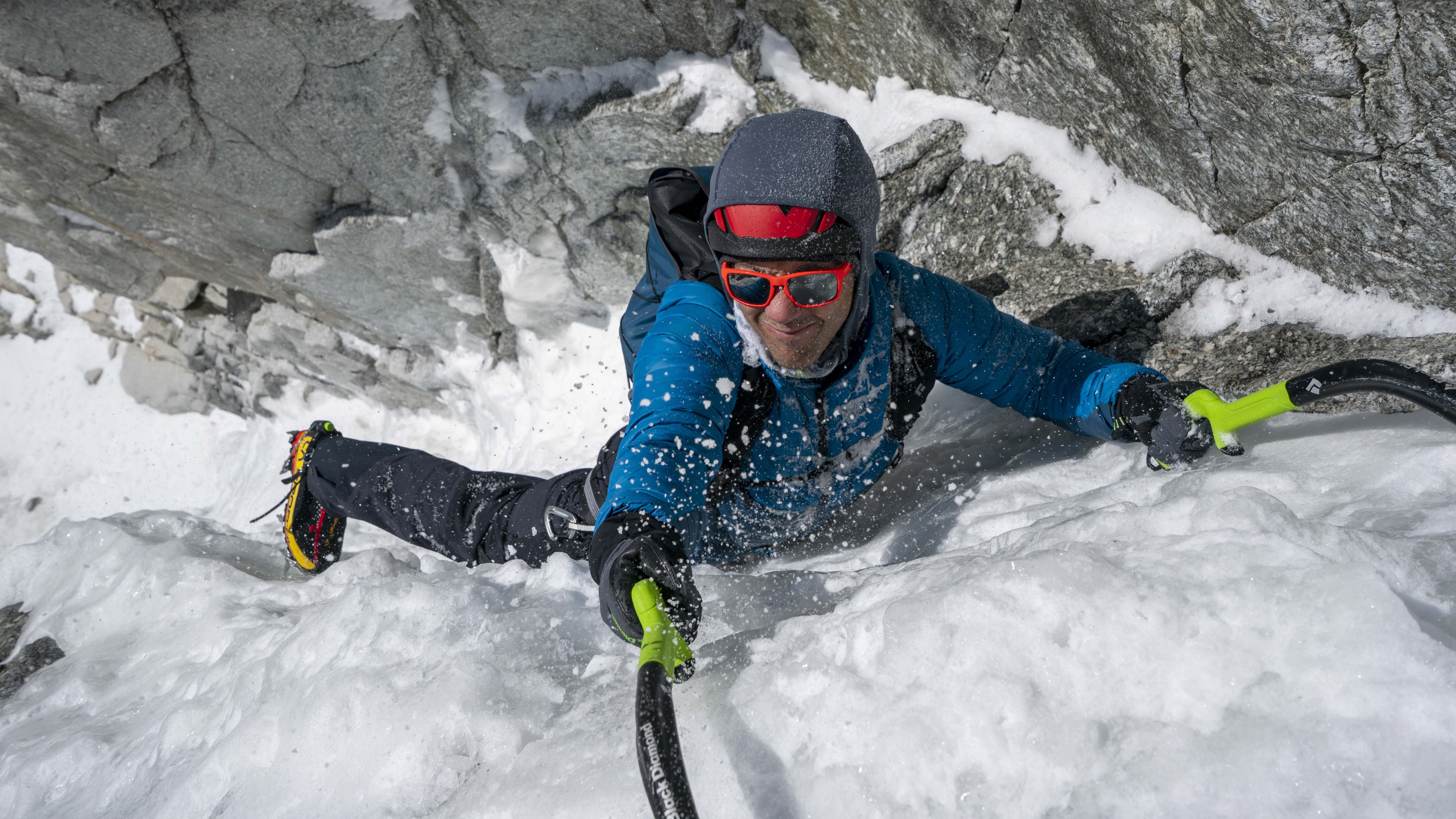
Knowing how to use an ice axe is different to being able to wield one effectively in the winter mountain environment, where there’s a smaller margin for error. Yes, the knowledge in this guide is a good start but it’s no substitute to loading your hiking backpack and getting out there to practise. Ideally this apprenticeship with the winter environment would be with an experienced friend or an instructor on easy ground until the techniques become second nature, before moving to more challenging terrain.
Merely owning the best winter hiking boots, the finest ice axe and a good pair of crampons is nothing unless you know how to use them safely. In fact, the false confidence you might feel just by having these tools could be more dangerous than if you didn’t have them. Having them in your possession might tempt you to take on more serious ground than your experience should allow. Put it this way, if you were given a load of firefighting equipment that you didn’t know how to use, you’d be hesitant about entering a blazing inferno.

So, if you’ve got a shiny new ice axe and want to get started, read this guide carefully and then get practising. Let’s start different types of axe, before moving on to what does what.
How to use an ice axe: what does what on your ice tool
When learning how to use an ice axe, you need to know what each component does. Fortunately, an ice axe is a simple tool at heart, though they are becoming more and more specialized with every winter season. A standard axe comprises a shaft topped by a head with an adze on one end and a pick on the other. The head usually had a leash attached to it. The bottom of the shaft is occupied by a small spike and has an insulated area for you to grip.
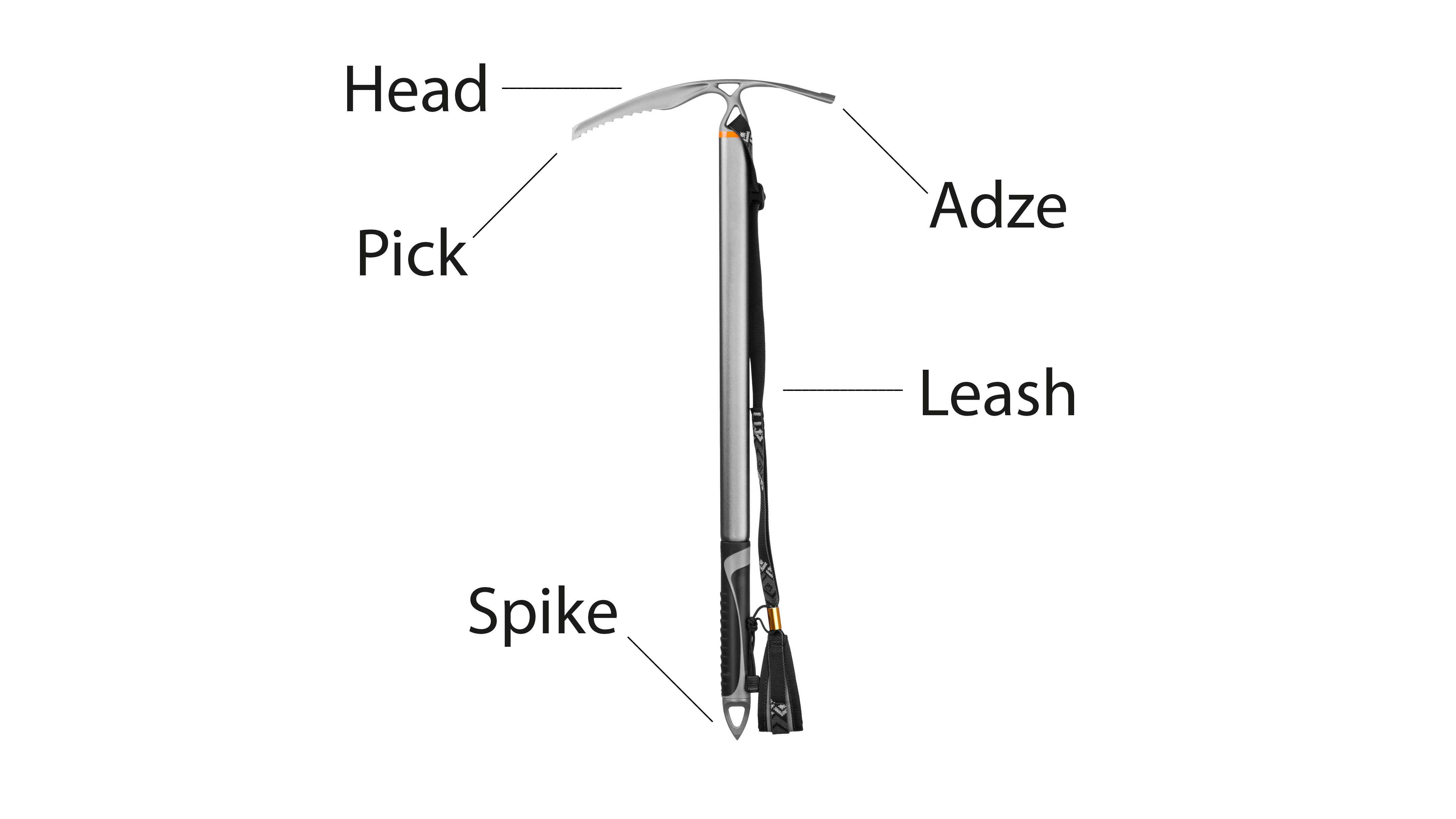
Let’s start with the head. The pick is used to grip onto snow and ice and is serrated on its underside to give it more holding power. This is the part of the axe that gets all the glory, the essential part of the tool when it comes to climbing steep slopes. For cutting and clearing snow, this is where the less glamorous, but no less important, adze comes in.
All the latest inspiration, tips and guides to help you plan your next Advnture!
The leash is usually threaded through a hole in the head and contains a loop for your arm. Many mountaineers remove the leash because, in the event of a nasty tumble, if you lose your grip on the shaft, the axe becomes a loose cannon, its sharp bits spinning this way and that. You don’t really want that attached to you in a fall. On the other side of the argument, if you lose your grip but don’t have a leash, you’ve got nothing to arrest your fall, which might end you up in an even worse situation. The point here is, don’t lose your grip on the shaft!
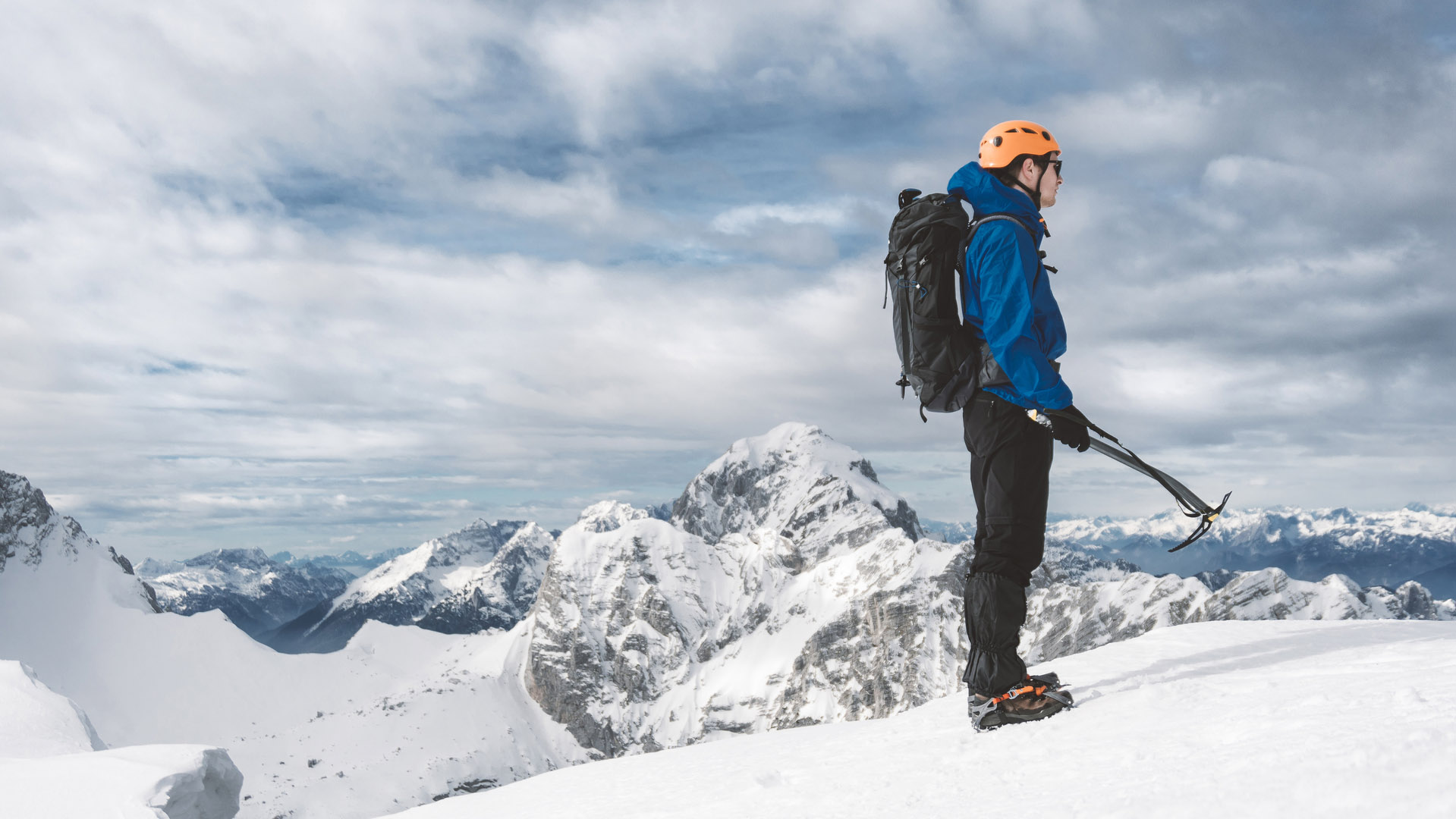
Originally made out of wood but these days made from aluminium or even carbon fiber, the shaft is the part of the axe that you hold. Metal conducts heat very effectively, which also means it conducts the extreme cold of the winter mountain environment very well too. Due to this, axes have an insulated coating on the grip, often made out of rubber. However, unless you enjoy the sensations of serious frost bite (which no one yet has in humanity’s long history) you will also need your hiking gloves when handling an ice axe, especially as the head is not insulated.
The spike is the workhorse of the axe, constantly being thrust into the snow as you plod your way upwards. Its main function is to give you stability when your tool is being used as a glorified, wintery trekking pole.

How to use an ice axe: different types of ice tool
There are broadly three types of ice axe, though there are increasingly new variations found within each group. This trio comprises walking axes, alpine or mountaineering axes and technical axes.
A walking axe features a long, straight shaft, which is designed to give you stability and support when plodding up snow slopes. The pick is there for any steep ground you encounter or if you need to perform an ice axe arrest (more on this later).
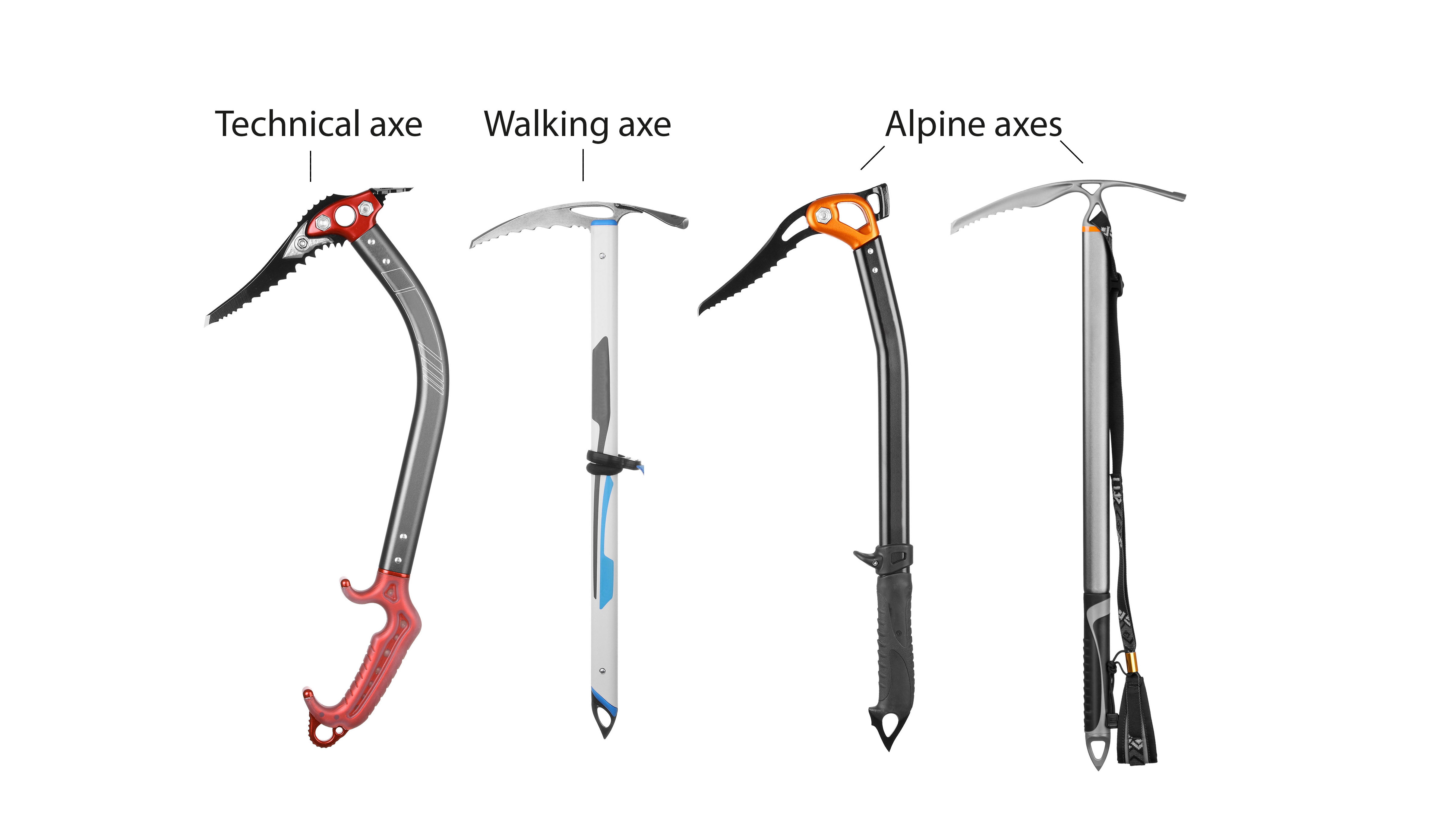
A mountaineering or alpine axe occupies the middle ground between a walking axe and a technical climbing axe. The head will be more curved and there may be a curve in the shaft too, allowing for an easier swing when using the pick on steeper ground. Its length means it can still be used for support when walking up snow slopes.
A technical axe is designed for tough winter climbing, ice climbing and alpine routes beyond the PD grade. Technical axes come in pairs, one with an adze and one with a hammer. The adze is used to clear rime during a climb, while the hammer can be used to bash protection into cracks. The shaft is noticeably shorter and much more curved, ideal for solid pick placements on extremely steep walls of ice and snow. Some models now feature an ergonomic offset handle, which gives you a more comfortable grip and greater stability on smaller hooks.
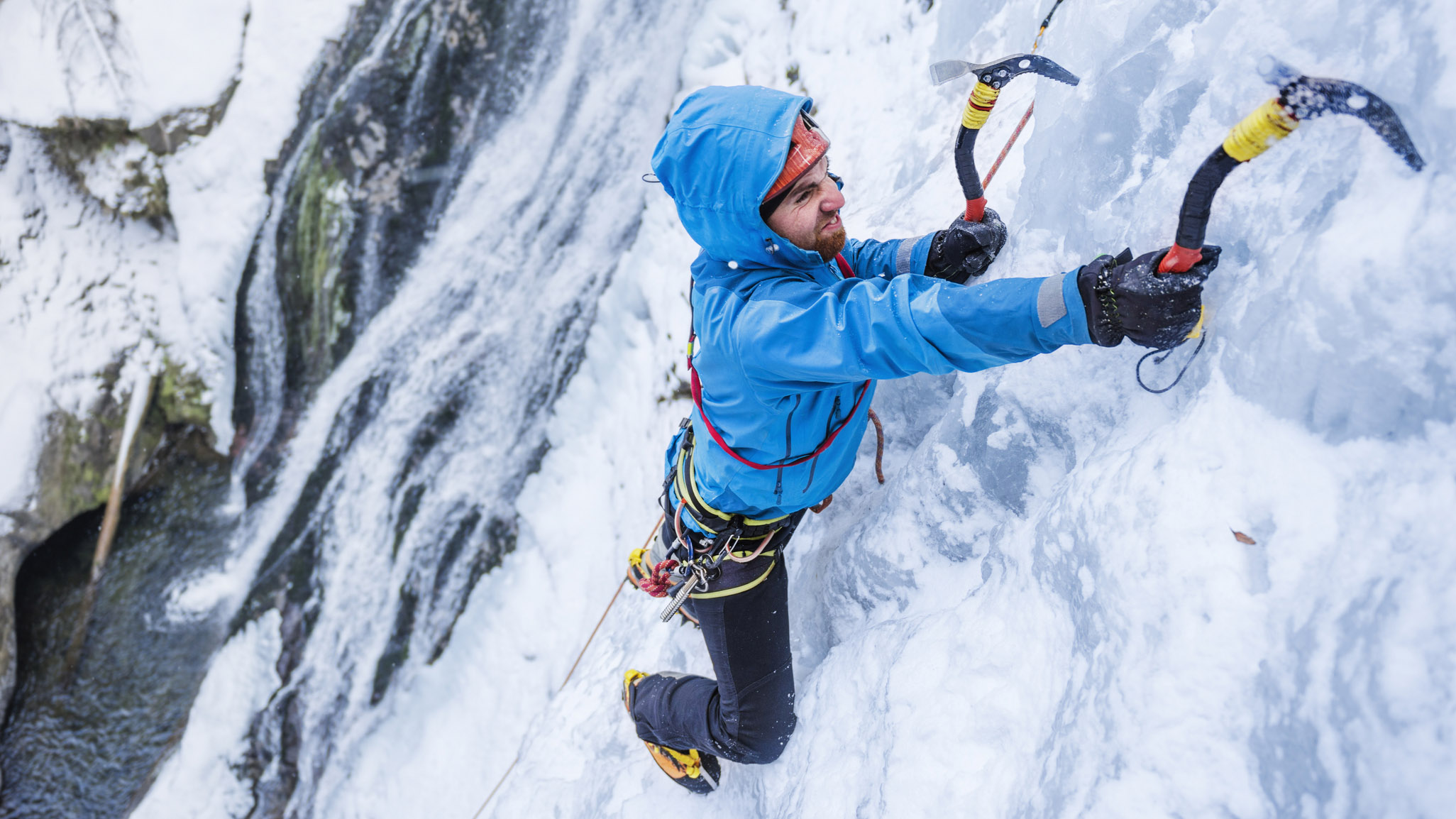
How to use an ice axe for winter walking and mountaineering
On any given route, it's a judgement call as to when you should unleash your ice axe from the straps of your daypack. Once you hit snowy or icy ground, consider the likelihood and the consequences of a slip and the severity of the gradients around you. If there’s any possibility of things going awry, it’s time to get your axe out.
When ascending, carry your axe by its head in your uphill hand, driving the spike into the snow and using it for extra support. You can either have the pick pointed back towards you, which primes it in the event of needing to perform an ice axe arrest (see further down), or have the pick facing outwards, ready for it to be thrust into the slope.
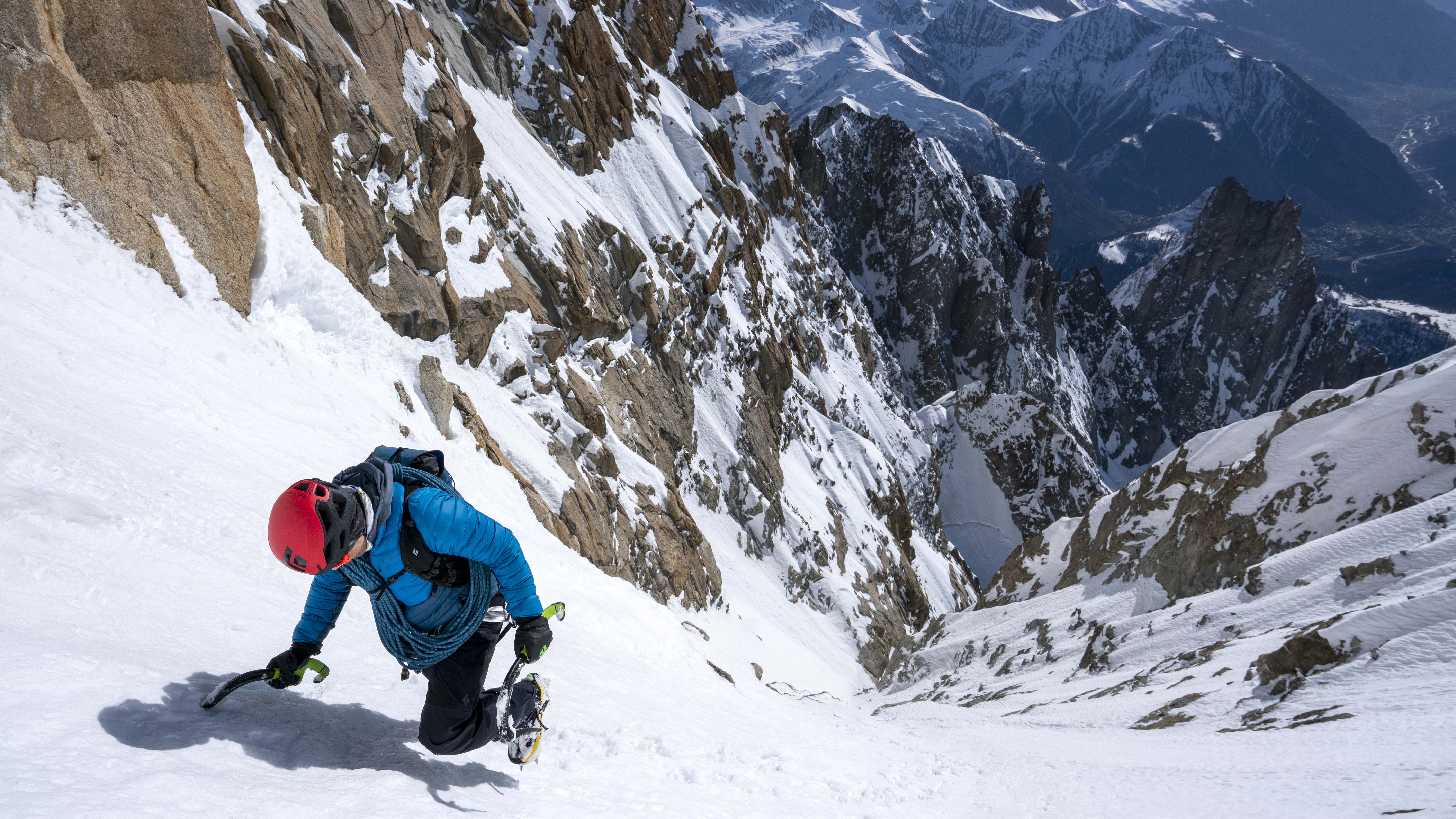
Upon hitting steeper ground, you can use your axe as a climbing aid, using the techniques of daggering or the classic overhead swing. Daggering involves holding the axe by the head and using your weight to force the pick into the snow as you ascend. The classic overhead swing entails holding the axe by the grip, aiming for a patch in the slope and swinging the pick into the snow. Check the placement is solid before pulling yourself up, gaining a strong foothold and then removing the pick. You can also hook the pick around rock or place it into small gaps when on mixed (rock and ice) terrain to form a secure hold.
There are myriad other uses for an ice axe. You can use the adze to cut steps into a short-lived – enough that it would be inefficient to bother with putting on and removing crampons – yet steep snow slope. Another use for the adze is cutting down into the slope to evaluate the snowpack, if you know what you are looking for in terms of avalanche danger. Ice axes can also be used as an anchor in glacier rescue situations.
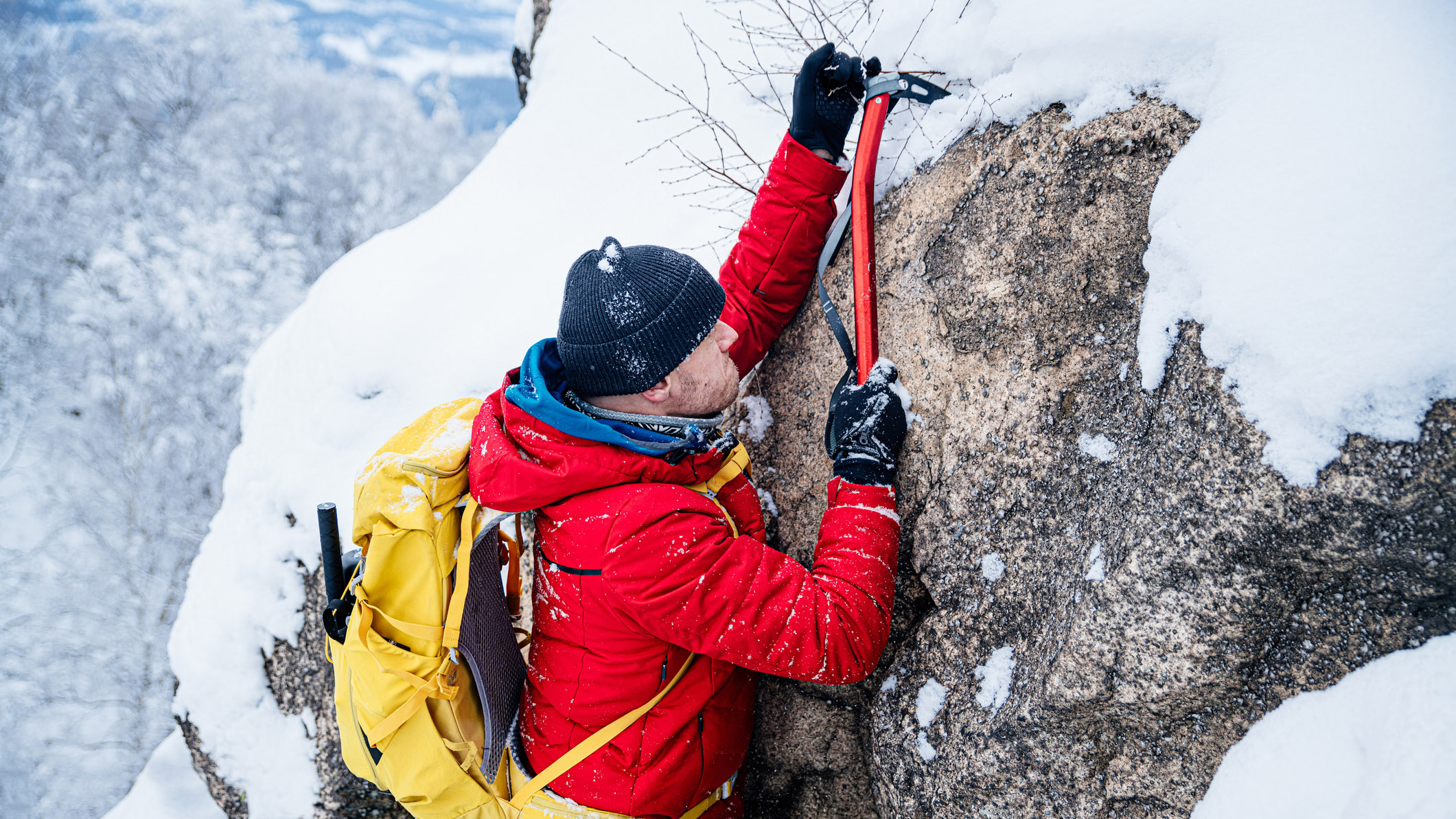
How to use ice axes for increasingly technical mountaineering and ice climbing
Armed with two technical axes and facing up to a steep wall of ice, this if where the axe swing really comes in to play. The technique can be described in four words: load, aim, fire and flick. To load, lift your axe up and straight back behind your head. Next, aim by selecting the point you are going to target. To fire, swing the axe forward by releasing your arm at the shoulder and the elbow. As the pick engages with the ice flick your wrist forward to avoid injuring your knuckles. A solid placement should see the axe relatively parallel to the ice.
To remove the placement, pull outwards on the shaft before pushing it back towards the ice and lifting up and out. If it’s still stuck, hit the underside of the head with your hand, which should loosen a stubborn placement. Lastly, keep your head away from the path of the axe as you pull it out. Many a black eye has been caused by negligence here.
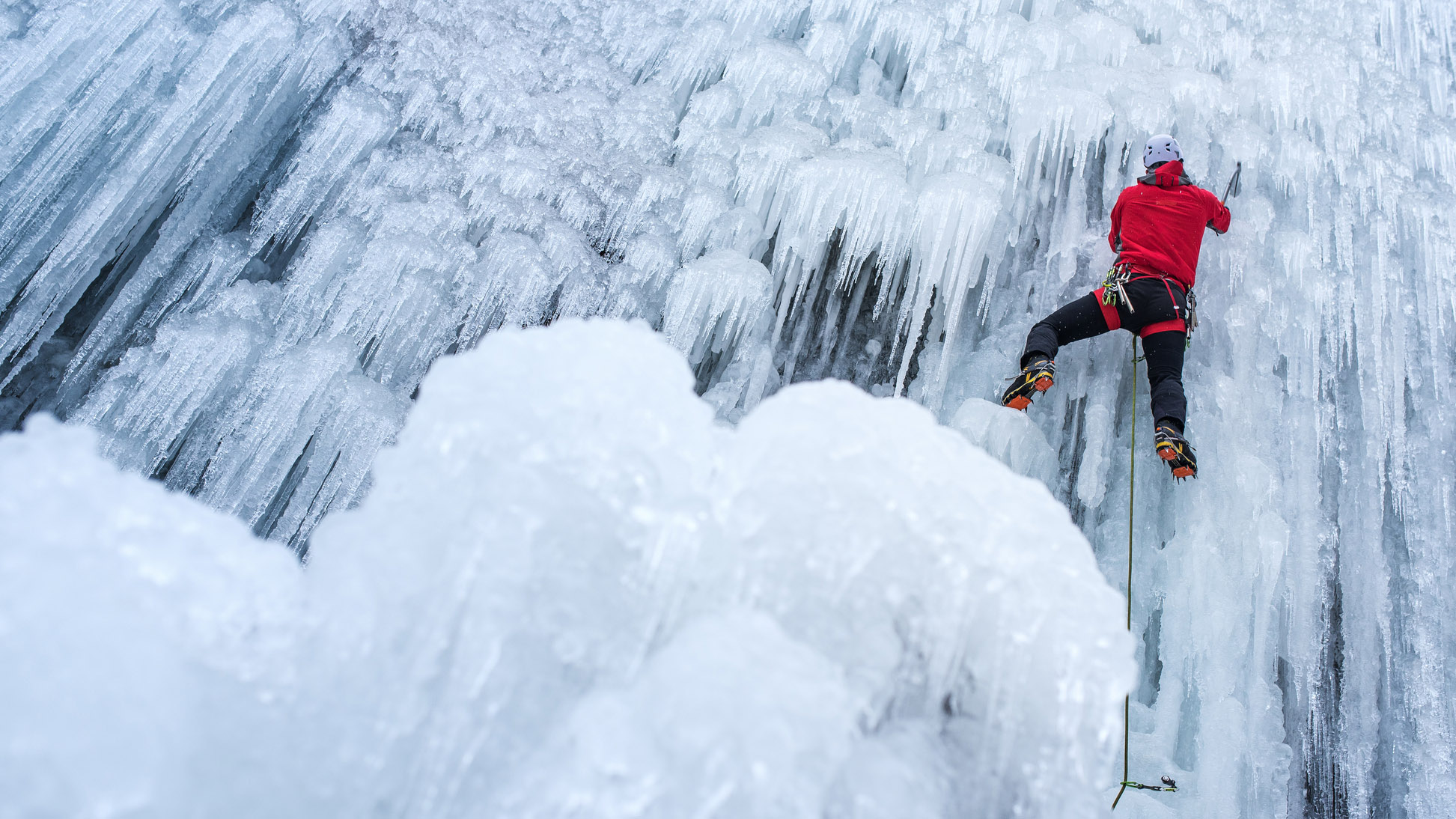
How to use an ice axe to stop a fall
Knowing how to use an ice axe to stop a fall is an absolutely essential skill and you shouldn't head out into the winter environment with an ice axe if you do not know how to do it.
It's called an ice axe arrest, which isn’t something police officers do when someone heads out without knowing how to use an ice axe properly. No, an ice axe arrest is how you stop yourself sliding down a steep slope before you collide with anything or, worse, fly off the end of anything. We would strongly recommend booking onto a winter skills course to receive instruction and to properly practise these techniques with an expert. Never practise ice axe arrests with crampons on, as they can snag and cause injury.
To stop a fall, you need to bury the pick of your axe into the snow slope. However, unless you do this using the correct method, the forces involved will give you a nasty arm or shoulder injury and you’ll probably let go of the axe because of the pain – which is the last thing you want to do.
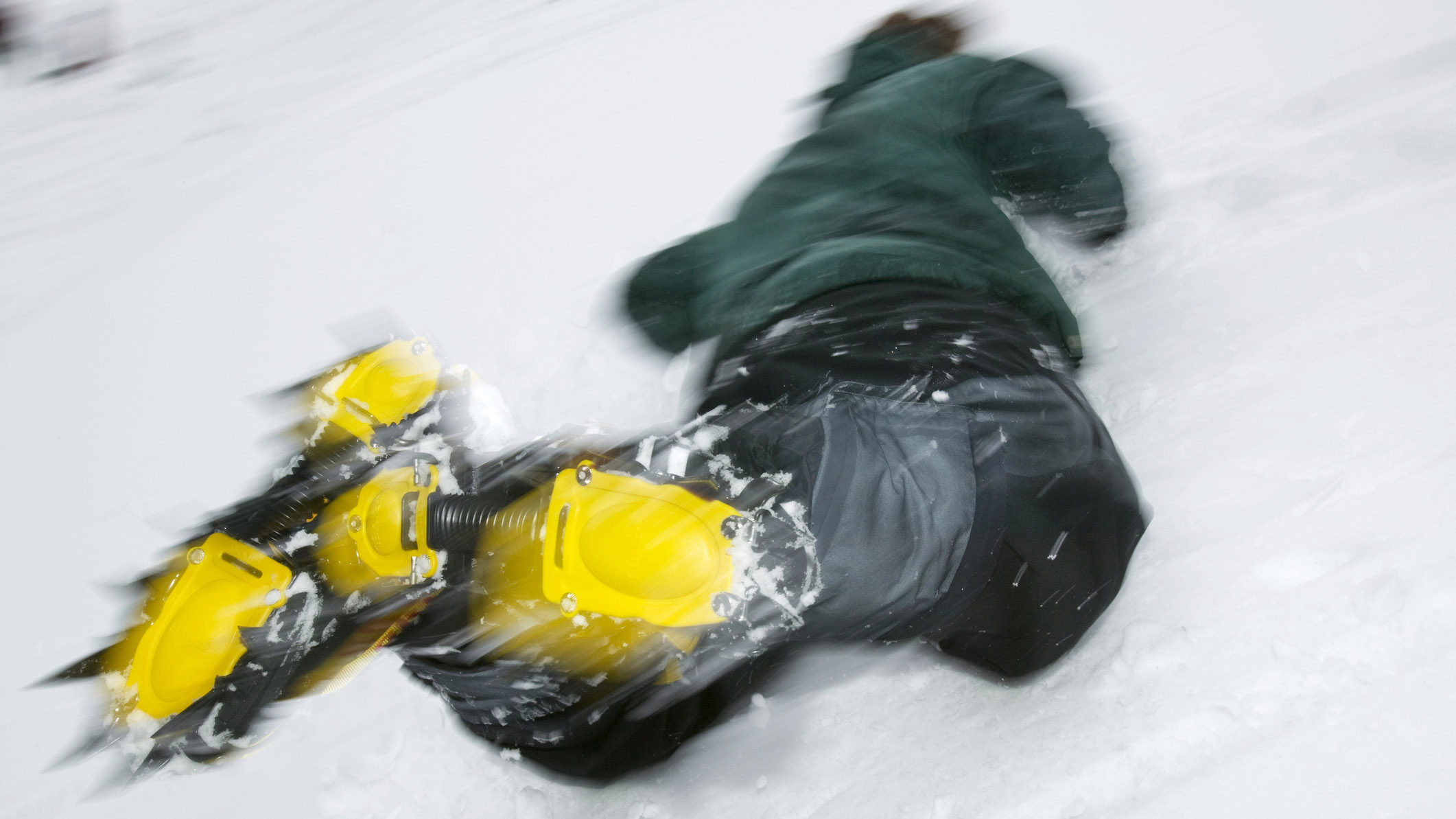
To effectively stop yourself, you need to be facing into the slope and sliding down feet first. Hold the axe by the head in one hand and hold and cover the spike with the other. Position the axe diagonally and tight across your chest and stomach, with the adze pushed firmly into the hollow beneath your collar bone and turn your face away from the axe. Lift your feet up clear off the slope and position them about hip width apart. Once in position, firmly press the pick into the snow using your body weight and you will soon come to a stop.
In the unlikely event of a tumble, the chances are that you won’t be facing into the slope feet first initially. Life isn’t often that kind! If you’re sliding down on your back, you need to roll onto your front, while keeping your back arched so that the pick doesn’t go into the slope. You can get the axe into position before you roll and then, once you’re on your front, you can press the pick into the snow and bring yourself to a stop.
If you are sliding headfirst, you need to use your axe’s pick as a pivot to turn yourself the right way around. If you're on your front, while still holding the axe by the head and the spike, dig your pick into the snow to the side, slightly uphill of your shoulder. This will turn you around and then you can start the process of a normal arrest. If you are sliding headfirst on your back, you can roll over onto your front and follow the above procedure.
Alex is a freelance adventure writer and mountain leader with an insatiable passion for the mountains. A Cumbrian born and bred, his native English Lake District has a special place in his heart, though he is at least equally happy in North Wales, the Scottish Highlands or the European Alps. Through his hiking, mountaineering, climbing and trail running adventures, Alex aims to inspire others to get outdoors. He's the former President of the London Mountaineering Club, is training to become a winter mountain leader, looking to finally finish bagging all the Wainwright fells of the Lake District and is always keen to head to the 4,000-meter peaks of the Alps. www.alexfoxfield.com

